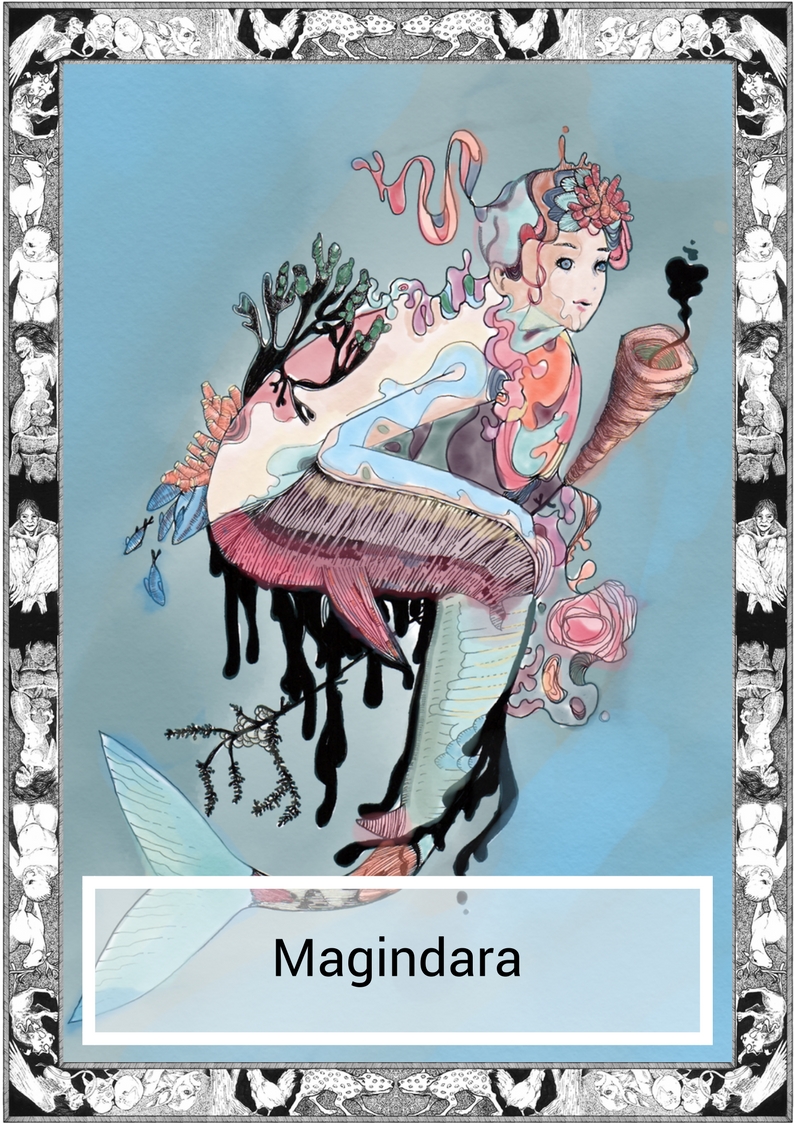
*Note this story is in Cebuano
“Ila kong iluwas.”
Ang mga balod gabangga ug gapaibabaw sa ulo sa mananagat. Gapaningkamot siya nga makalutaw pa apan ang unos dili magpapildi. Libo hangtud milyon nga tagaktak sa ulan ang gahulma sa dili maila nga hulagway sa dagat, apan kahibalo siya nga kana tanan mulabay ra.
Nakahinumdom siya sa mga luha sa iyahang inahan adtong panahon nga iyaha rang gipadaplin ang rosaryohan. Ang iyahang inahan nahadlok para sa iya apan mas naguol para sa iyahang kalag. Ang mananagat kay anak gayod sa iyahang amahan ug padayon nga gatuo sa mga kinaraang pamaagi kay ang tubig naa sa iyahang dugo.
Nagpakilooy iyahang inahan na unta musalig siya sa iyahang mangluluwas, ilahang mangluluwas. Katong pirmi ipahinumdom sa iyaha sa ngan sa gugma ug kahayag, apan wala niya gipaminaw ang sulti sa iyahang inahan. Dili masabtan sa iyahang inahan ang ilang kinabuhi sa dagat, ang mga gabantay sa ilahang tanan.
“Aswang sa Dagat” – mao na ang tawag sa ilaha. Matud nila, ang mga espiritu gapanglumay, pinaagi sa ilahang duyog, ug mga mananagat paingon sa tubig para ilumos ug kaonon. Gakakurat gihapon siya nga sa unsa na kadugay ana nga tuo-tuo kay daghan pa gihapon gatuo. Kabalo ang mga mananagat sa kamatuoran bahin ana, pakita ug respeto ug paglantaw sa mga espiritu.
Pero wala na siyay mabuhat. Ang mga nilabay nga tuig nakapabag-o sa kung asa gasalig ang mga tawo sa panahon sa kalisud. Wala nay nabilin nga halad para sa dagat ug mga ampo para sa mga balod. Siya na lang usa nabilin. Ang katapusang anak sa usa ka himatyon nga tinuohan.
Nawad-an na ug kusog ang mga bukton sa mananagat. Dili na makaya sa iyahang lawas ang murag walay katapusan nga pagdasdas sa mga balod ug ulan. Nahuna-hunaan niya iyahang inahan ug padayon nga nagtuo sa iyahang tinuohan. Ang iyahang ngabil nagsulti ug katapusang pag-ampo ayha siya napaingon sa ilalom sa mga balod.
Ang tubig magtultol nako pauli
Musalig ko kanimo
O, mga espiritu sa unos ug dagat
Ang kangitngit mahimong kahayag
Ang mga balod malinaw
Ako muuban sa dagat
English Version
English Version
“They will save me.”
The waves crash over the fisherman’s head. He tries to tread water but the storm will not let up. Thousands upon millions of raindrops batter the ocean’s shapeless form, but he knows they will pass. They did not lead him here to drown and he will trust in them until the end of his days.
He remembers the tears in his mother’s eyes when he tossed her rosary aside. She was scared for him, but more concerned for his soul. The fisherman was his father’s son and carried on believing in the old ways because the water was in his blood.
His mother begged him to trust his savior, their savior. The one she had raised him to remember in love and light, but he couldn’t listen to her. She could never understand the life they had at sea, the guardians that protected them.
“Aswang ng Dagat” – that’s what they called them. They say that the spirits lured fishermen into the water with their songs to drown and eat them. It still surprised him how long that lie had lasted and how many people still believed in it. The fishermen knew those stories for what they were: a brush used to paint over the centuries of respect and admiration of the spirits.
There was nothing he could do though. The years had changed what people turned to in their times of need. There were no more offerings by the sea, or prayers to the waves. What was left was him. The last son of a dying belief.
The fisherman’s arms are getting weak now. His body is finally surrendering to the endless onslaught of the waves and the rain. He thinks back to his mother and stays firm in his conviction. His lips release one final prayer before his head goes beneath the waves:
The water will lead me home
I will trust in you
O spirits of storm and sea
The darkness will turn into light
The waves will calm
I will be with the sea
*The Cebuano language, alternatively called Cebuan and also often colloquially albeit informally referred to by most of its speakers simply as Bisaya (“Visayan”, not to be confused with other Visayan languages nor Brunei Bisaya language), is an Austronesian regional language spoken in the Philippines by about 21 million people, mostly in Central Visayas, western parts of Eastern Visayas and most parts of Mindanao, most of whom belong to various Visayan ethnolingusitic groups, mainly the Cebuanos. It is the by far the most widely spoken of the Visayan languages, which are in turn part of wider the Philippine languages. The reference to the language as Bisaya is not encouraged anymore by linguists due to the many languages within the Visayan language group that may be confused with the term. The Komisyon ng Wikang Filipino, the official regulating body of Philippine languages, spells the name of the language as Sebwano.
Written by Karl Gaverza
Cebuano Translation by Colleen Salcedo
Copyright © Karl Gaverza
Translation Copyright © Colleen Salcedo
Inspired by the Magindara entry in Bikol Beliefs and Folkways: A Showcase of Tradition. Nasayao 2010.
Magindara Illustration by emirajuju
IG: https://www.instagram.com/
Watercolor by Mykie Concepcion
Tumblr: http://
